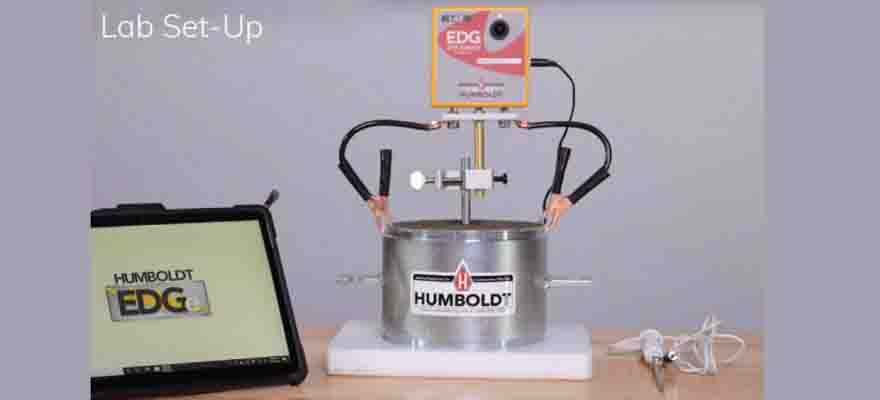The Future of Field Testing Equipment: Innovations and Trends
Field testing equipment plays an essential role in the construction, civil engineering, and infrastructure industries. These tools ensure that materials, structures, and systems meet the required quality standards before they are used in large-scale projects. As technology advances, innovations in field testing equipment continue to shape the way engineers and construction professionals conduct their work. In this article, we’ll explore the future trends and innovations in field testing equipment that will continue to evolve the industry.
1. Non-Nuclear Testing: A Safer Alternative
One of the biggest trends in field testing equipment is the shift toward non-nuclear testing methods. For many years, nuclear-based testing tools like the Non-nuclear density gauge were common for measuring soil compaction and material density. However, the increasing demand for safer, more environmentally friendly solutions has led to the development of non-nuclear alternatives. These gauges can provide the same level of precision and accuracy without the risks associated with nuclear radiation, making them an attractive option for modern construction projects. As the technology improves, non-nuclear density gauges will likely become the industry standard, eliminating the need for costly safety procedures and regulations related to nuclear testing.
2. Advancements in Concrete Testing: Concrete NDT Equipment
Concrete testing is a critical part of ensuring the structural integrity of buildings and infrastructure. Innovations in Concrete NDT Equipment, which allows for non-destructive testing (NDT) of concrete, are transforming the way engineers inspect concrete structures. These tools use various techniques like ultrasonic pulse velocity, rebound hammer, and ground-penetrating radar to detect cracks, voids, or other inconsistencies within concrete without causing any damage. Moving forward, these technologies will continue to advance, with sensors becoming more sensitive and providing more detailed information about the internal condition of concrete.
3. Slope Stability and Geotechnical Modeling Software
As the construction industry increasingly focuses on building on uneven terrain or mountainous areas, the demand for slope stability analysis is growing. The Slope Stability analysis software is already used to evaluate and predict the stability of slopes and hillsides. This software is integral for civil engineers working on infrastructure projects in hilly regions or in areas prone to landslides. The future of this software lies in integrating more real-time data from field sensors and providing engineers with dynamic and predictive insights, allowing for faster decision-making and better risk management.
Furthermore, Geotechnical modeling software is also evolving, providing more accurate simulations of subsurface conditions. As more data is collected from sensors and tests, these models will become more sophisticated, helping engineers make better-informed decisions about foundation design, soil stabilization, and construction planning.
4. Integrated Systems and Data Analytics
As field testing equipment becomes more advanced, another major trend is the integration of these tools with data analytics platforms. Engineers can now collect data from a range of testing equipment such as Vibration monitoring equipment, soil testers, and concrete testers, and send it directly to a central system for analysis. This allows for real-time reporting and quicker decision-making, leading to greater efficiency on construction sites. The rise of cloud-based platforms will make this data more accessible, ensuring that field engineers, project managers, and clients have instant access to the information they need.
5. Smart Sensors and Internet of Things (IoT) Integration
The Internet of Things (IoT) is becoming a game-changer in the construction and field testing industry. With the integration of smart sensors into testing equipment, engineers can now collect continuous data in real-time. For instance, Pressure Aging Vessel can be equipped with IoT sensors to monitor the aging process of asphalt, allowing engineers to track changes and predict future performance. Similarly, Bond Pull Off Test equipment can be enhanced with wireless sensors to streamline testing and provide data on the strength of coatings or adhesives in real-time. This trend of connected devices and real-time monitoring will lead to more predictive maintenance, enhanced safety, and improved performance in construction projects.
6. Mobile and Portable Testing Equipment
The demand for portable, easy-to-use field testing equipment is on the rise. Engineers and construction professionals need equipment that can be easily transported to remote project sites. Mobile versions of essential testing tools like the Soil Testing Equipment in India and Marshall Stability Equipment are becoming more common, allowing for more flexibility and faster testing on-site. This shift toward portable testing solutions is expected to continue, making field testing more efficient and less costly.
7. Automation and Robotics
The future of field testing will likely include more automation and robotic technologies. In the coming years, it is expected that automated systems will be developed for tasks such as sample collection, testing, and reporting. Robots could be deployed to conduct routine testing of materials, reducing the time spent by engineers on-site and minimizing human error. For example, robots could be used to automate the process of conducting Indirect Tensile Strength of Asphalt tests or to monitor structural stability in real-time using Vibration monitoring equipment.
Conclusion
The future of field testing equipment is filled with exciting innovations that will continue to improve the way engineers assess and verify construction materials and infrastructure. From non-nuclear testing methods to the integration of IoT and data analytics, advancements in field testing will provide more accurate, real-time data, leading to safer, more efficient construction projects. By staying ahead of these trends and adopting the latest technologies, engineers will be able to deliver higher-quality work while reducing costs and improving safety on-site. As the industry evolves, the use of cutting-edge Concrete NDT Equipment, UPV test services, and other advanced tools will continue to shape the future of construction.





